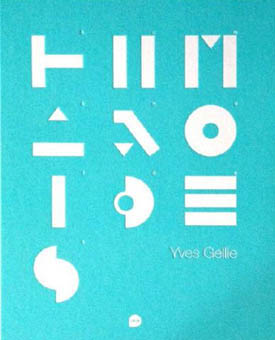YVES GELLIE
Editeur : EDITIONS LOCO
Année de parution : 2013
HUMAN VERSIONYves Gellie’s work has focused over the years on the link between the real world and the fictional power of images. His approach as a plastic artist strikes a balance between documentary photography and contemporary art. In 2008 he began visiting the major scientific laboratories working on humanoid robotic development throughout the world.He discovered the universe in which these android avatars take shape and are « born » to go on to work in the military, health or personal services sectors. It is an area where reality can be stranger than fiction, and the photographs resulting from his investigations are veritable portraits – often with no human presence – taken in a laboratory environment that is like a sort of garden in which a new species is coming to life. Paradoxically, what worries researchers today has already come up in science-fiction ; in 2007, the Korean parliament took inspiration from Isaac Asimov’s works to pass a series of laws to govern the relationship between man and robot.Designed as a true artist’s book, with an introduction treating legal aspects of robotics, the reader discovers Yves Gellie’s large-format photographs followed by an interview between the photographer and the philosopher Jean-Michel Besnier.«South Korea, for example, and Japan, both of which run android robotics research programmes and the associated manufacturing activities, have sought to draw up a sort of charter to define a moral and judicial framework governing robots. The Koreans were even inspired by the works of Isaac Asimov, the well-known author of science fiction, who fifty years ago proposed three laws concerning the behaviour of robots. They aim to ensure that: 1) a robot is never a threat to human life, nor will ever allow a human life to be threatened, 2) a robot will always obey a human, except when the order is contrary to the first law, and 3) a robot should strive to protect its own existence, provided that this does not go against either of the first two laws. It is interesting to note that wherever they happen to be established, such charters formalise moral and judicial codes of behaviour : moral, because it seems not impossible to one day give robots the ability to distinguish between good and evil, so that they will make good decisions, — “technological” military drones will one day be given the faculty of judging between good and evil. (…)». Yves Gellie

Lettre d’information
75004 Paris – France
+33 (0)1 42 74 26 36
ouverture du mercredi au samedi
de 13h30 à 18h30. Entrée libre
M° Rambuteau – Les Halles
Pour Que l’Esprit Vive
20 rue Lalande
75014 Paris – France
T. 33(0)1 81 80 03 66
www.pqev.org

